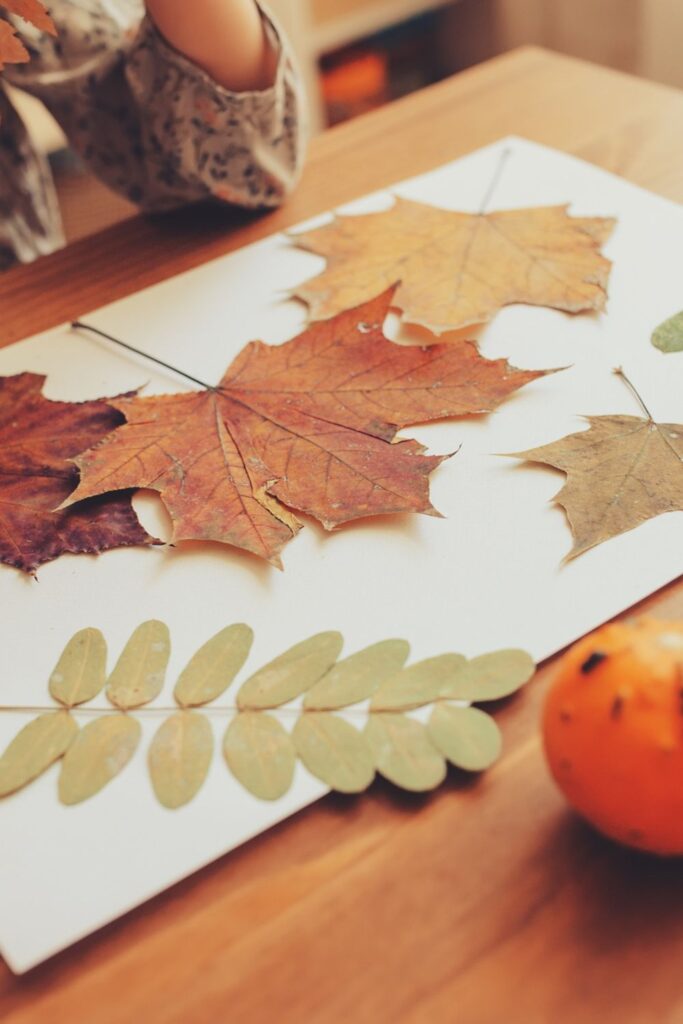Ah, the annual battle of the leaves—the epic showdown that pits homeowners against Mother Nature’s relentless autumnal deluge. We’ve all been there, staring out at the endless carpet of fall foliage, contemplating whether to summon the leaf-bagging army or wave the white flag of surrender.
But fear not, for there’s an easy solution! There are a number of reasons why you might want to ditch the leaf bags and take a more eco-friendly approach. This year, why don’t you leave the leaves for wildlife! It turns out that there are numerous benefits to letting nature take its course, and we’re here to show you the way to leafy victory without the bags.
Posts feature partner companies & may be sponsored. Post contains affiliate links & I will be compensated if you make a purchase after clicking on links. As an Amazon Associate I earn from qualifying purchases.
Table of Contents
Why You Should Not Bag Your Leaves This Fall
Opting not to bag your leaves this fall offers several compelling advantages. One of the foremost benefits is the positive environmental impact. Bagged leaves that end up in landfills can generate methane, a potent greenhouse gas.
In contrast, leaving fallen leaves on your property to decompose naturally contributes to environmental sustainability. Additionally, fallen leaves are a valuable source of organic matter and nutrients for your soil, improving its health and benefiting your plants.
By refraining from bagging leaves, you can save on costs associated with disposal fees and bags. This method is not only cost-effective but also less labor-intensive. Lucky you!
Bagging leaves can be physically demanding, and other techniques, such as mulching with a lawnmower or using a leaf blower to create piles for composting, are more efficient and less strenuous. Check out my post about how bad leaf blowers are for the environment to learn why you should not use them at all.
Moreover, bagging leaves disrupts wildlife habitats, as leaves on the ground provide shelter for small creatures.
The natural look of leaves on the ground during the fall season can be aesthetically pleasing for many homeowners. It adds to the seasonal charm of your property. Less waste is another advantage; reducing the amount of material sent to landfills is a sustainable choice.
Furthermore, leaves can help improve soil structure and offer improved drainage, making them particularly beneficial for clay-heavy soils. They can act as a natural mulch under trees and a thin layer of them won’t hurt your grass over the winter.
Lastly, leaving leave litter to decompose supports biodiversity, as they provide shelter for insects and other small creatures that enhance your local ecosystem. Thus, not bagging your leaves is an eco-friendly approach with numerous benefits to consider.
✯Don’t want to miss the next post?✯ Follow Turning the Clock Back on Facebook | Twitter | Pinterest Or join the private Facebook group for simple tips on going green!
If You CAN’T Leave the Leaves
If you can’t leave the fall leaves where they are but still want to adopt sustainable alternatives to traditional bagging and disposal, here are some eco-friendly options:
Mulching:
Use an electric mulching lawn mower to chop the leaves into smaller pieces. Shredded leaves can be left on your lawn to decompose naturally and enrich the soil.
Composting:
Collect the leaves and create a dedicated compost pile or bin. Combine them with kitchen scraps and other organic matter for a nutrient-rich compost that you can use in your garden. Check out my list of compostable items for more information about starting a compost pile.
Leaf Mold:
Create a separate pile of leaves to make leaf mold, a rich, crumbly, dark material that serves as an excellent soil conditioner. It takes longer to break down than traditional compost, but it’s worth the wait.
Layered Garden Beds:
Use leaves as mulch in your garden beds. A layer of leaves can help retain moisture, suppress weeds, and improve soil structure.
Hugelkultur:
If you have a larger quantity of leaves and woody materials, consider raking it into a hugelkultur mound. This permaculture practice involves burying organic matter like logs and leaves in a raised bed to create a fertile, self-sustaining garden. Check out The Art And Science of Hugelkultur Gardening to learn how.
Leaf Piles for Wildlife:
Create small leaf piles in a corner of your yard to provide shelter for wildlife during the winter, including insects, frogs, and small mammals.
Donation:
If you have more leaves than you can use, consider donating them to local community gardens or farms for use as mulch or compost. Composted leaves add nutrients to gardens so if you aren’t mulching leaves yourself, let others do it for you.

Leaf Crafts:
Get creative with your leaves by using them in various craft projects or decorations. This not only recycles the leaves but also allows you to enjoy them in a different way.
Leaf Exchange:
Some communities have leaf exchange programs where you can exchange your leaves with neighbors who may need them for their own gardens.
Local Yard Waste Facility:
Many areas have yard waste facilities that accept leaves and other organic materials to encourage residents to stop raking. They often compost these materials, so your leaves can be put to good use.
Join the Leave the Leaves Campaign
The “Leave the Leaves” campaign is a community and environmental initiative that encourages residents to leave their leaves on the ground rather than bagging or disposing of them. The campaign is often organized at the local or regional level, and information can be found through various sources:
- Environmental Organizations: Check with local or regional environmental organizations or conservation groups that might be involved in the campaign. They often provide information and resources on their websites. You can also check out the Department of Agriculture.
- Local Gardening Clubs: Gardening clubs and horticultural societies in your area may be involved in the campaign or provide information and tips on how to participate.
- Yard Waste Collection Information: If your area has a yard waste collection program, they may promote or support the “Leave the Leaves” campaign. Check their website or contact them for details.
- University Extension Offices: Contact your local university’s agricultural extension office, as they often provide information on sustainable landscaping and composting practices.
Keep in mind that the availability of information about the “Leave the Leaves” campaign may vary depending on your location and the level of community involvement. And if you join the movement, share your news with neighbors by putting up a leave the leaves yard sign.

Diane is a professional blogger and nationally certified pharmacy technician at Good Pill Pharmacy. She earned her BS in Microbiology at the University of New Hampshire and has worked in cancer research, academics, and biotechnology. Concern over the growing incidence of human disease and the birth of her children led her to begin living a more natural life. She quickly realized that the information she was learning along the way could be beneficial to many others and started blogging and freelance writing to share this knowledge with others. Learn more about her HERE.


